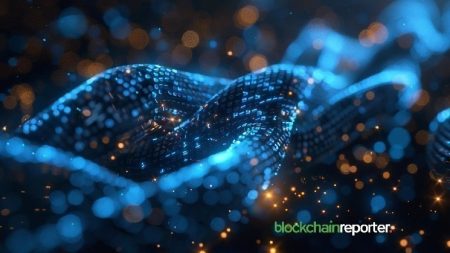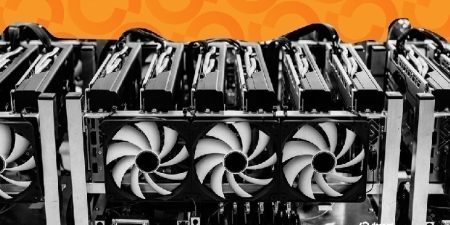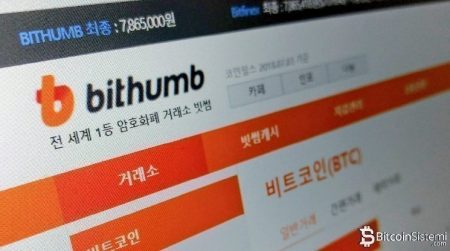Pearl v1 Launches: Pioneering the Decentralized AI Agent Marketplace
Olas Introduces First-of-its-Kind Platform Where Users Own Their AI Agents
In a significant development at the intersection of artificial intelligence and blockchain technology, Olas has unveiled Pearl v1, a groundbreaking decentralized “AI agent app store” that fundamentally transforms how users interact with autonomous AI systems. Announced Tuesday in a press release, Pearl v1 represents a paradigm shift in the AI landscape by enabling individuals to fully own and control AI agents while maintaining the user-friendly experience of conventional Web2 applications, all underpinned by Web3’s self-sovereignty principles.
The platform emerges at a critical juncture in the evolution of AI services, addressing growing concerns about data ownership, privacy, and centralized control. Unlike traditional AI platforms where users merely rent access to algorithms while surrendering their data to corporate entities, Pearl v1 establishes a new model centered on complete user ownership. Every action performed by an AI agent on the platform is verifiably recorded on-chain, creating an unprecedented level of transparency and accountability in automated AI operations.
“Centralized infrastructure has achieved global reach and performance, yet this concentration means decisions or faults can strip users of their data and work completely. This is why ownership is so important,” explained David Minarsch, founding member of Olas, in the company’s announcement. Minarsch emphasized the philosophical underpinning of the platform, adding, “At Olas, we’re building towards a future where your AI agents work for you, not for centralized platforms harvesting your data.”
Bridging Web2 Accessibility with Web3 Sovereignty
Pearl v1’s architecture represents a thoughtful compromise between accessibility and decentralization—a balance often difficult to achieve in blockchain applications. The platform allows users to begin their journey with familiar authentication methods like Google or Apple logins, removing traditional barriers to entry associated with Web3 applications. Funding AI agents is similarly streamlined, with support for conventional payment cards alongside cryptocurrency options. This hybrid approach maintains the intuitive experience users expect from consumer applications while preserving the fundamental principle of data sovereignty.
What distinguishes Pearl v1 in the evolving AI marketplace is its commitment to user custody of data and operations. While many platforms promise privacy or limited data usage, Pearl’s blockchain foundation ensures that users maintain genuine ownership over both their personal information and the outputs of their AI agents. This architecture supports Olas’s vision of transitioning from today’s model of passive AI consumption to active AI ownership, where individuals—not corporations—maintain authority over the autonomous systems acting on their behalf.
The platform launches with a diverse and expanding library of specialized agents designed for various applications across finance, creative endeavors, and social interactions. Each agent operates with transparency and verifiability, creating a trustless environment where users need not rely on corporate promises regarding data usage or algorithmic fairness. Instead, the blockchain record serves as the single source of truth for all agent activities.
Proven Performance in Decentralized Finance
Pearl’s launch follows a remarkably successful beta testing phase that demonstrated the platform’s potential for delivering tangible value through autonomous AI agents. The most striking example emerged in decentralized finance applications, where Modius—an AI trading agent—generated over 150% return on investment across a 150-day testing period. This performance not only validates the technical capabilities of Pearl’s agent architecture but also illustrates the practical utility of user-owned AI systems in competitive financial environments.
The success of Modius during beta testing suggests significant implications for the future of algorithmic trading and wealth management. By democratizing access to sophisticated AI trading strategies while maintaining user ownership of both the strategy and resulting assets, Pearl creates opportunities for individuals to benefit from algorithmic trading without surrendering control to centralized financial institutions or technology platforms. This aligns with broader trends toward financial democratization in both traditional finance and cryptocurrency markets.
Beyond financial applications, Pearl’s agent library demonstrates the versatility of autonomous systems across creative and social domains. These use cases illustrate how AI ownership extends beyond financial considerations into realms where personal expression and social interaction benefit from the same principles of sovereignty and transparency. Creative agents can generate content where the creator maintains full rights and control, while social agents can facilitate connections without the data harvesting that characterizes many existing platforms.
The Blockchain Foundation of Tomorrow’s AI Economy
Olas positions Pearl v1 as more than just another AI platform—it represents the infrastructure for an emerging agent-to-agent AI marketplace where autonomous systems interact, transact, and create value in a decentralized ecosystem. The platform’s blockchain foundation provides the necessary trust layer for these complex interactions, allowing agents to operate with verifiable histories and accountable behaviors.
“Blockchain will drive the agent-to-agent AI marketplace boom,” predicts Olas in its vision for the future of autonomous systems. This perspective acknowledges that as AI agents grow more sophisticated, their interactions will increasingly occur without direct human oversight, requiring robust systems for verification and trust. Pearl’s architecture anticipates this evolution by establishing the infrastructure for autonomous economic relationships between AI systems that remain accountable to their human owners.
The timing of Pearl’s launch coincides with growing public and regulatory attention to AI governance and data sovereignty. As large language models and autonomous systems become more integrated into daily life, questions about who controls these systems—and the data they generate—have taken on new urgency. Pearl offers a compelling alternative to centralized AI deployment models by demonstrating that cutting-edge AI capabilities can coexist with user ownership and transparent operations.
Reshaping the Future of AI Interaction
The introduction of Pearl v1 represents a significant milestone in the evolution of how humans interact with artificial intelligence. By establishing a model where users truly own their AI agents rather than merely subscribing to corporate AI services, Olas challenges fundamental assumptions about the relationship between humans, machines, and the companies that traditionally mediate this relationship.
This ownership-centered approach addresses growing concerns about AI systems that operate as “black boxes,” making decisions or taking actions without transparency or accountability. Each Pearl agent’s on-chain record creates an auditable history that allows users to understand exactly what their AI has done and why—a stark contrast to centralized systems where algorithmic decisions often remain proprietary and opaque.
As AI capabilities continue to advance rapidly, the question of who benefits from these technologies takes on increasing importance. Pearl’s model suggests a future where individuals retain the value created by their data and their agents’ activities, rather than seeing that value captured exclusively by technology platforms. This redistribution of value aligns with broader movements toward digital sovereignty and user-centered technology design.
The launch of Pearl v1 marks just the beginning of what Olas envisions as a fundamental transformation in AI deployment and ownership. As the platform’s agent library grows and user adoption increases, the potential emerges for a truly decentralized AI ecosystem where autonomous systems serve the interests of individual owners while maintaining the transparency and accountability essential for trusted operations. In this vision, the future of AI isn’t merely about more powerful algorithms, but about reimagining who controls those algorithms and who benefits from their capabilities.














